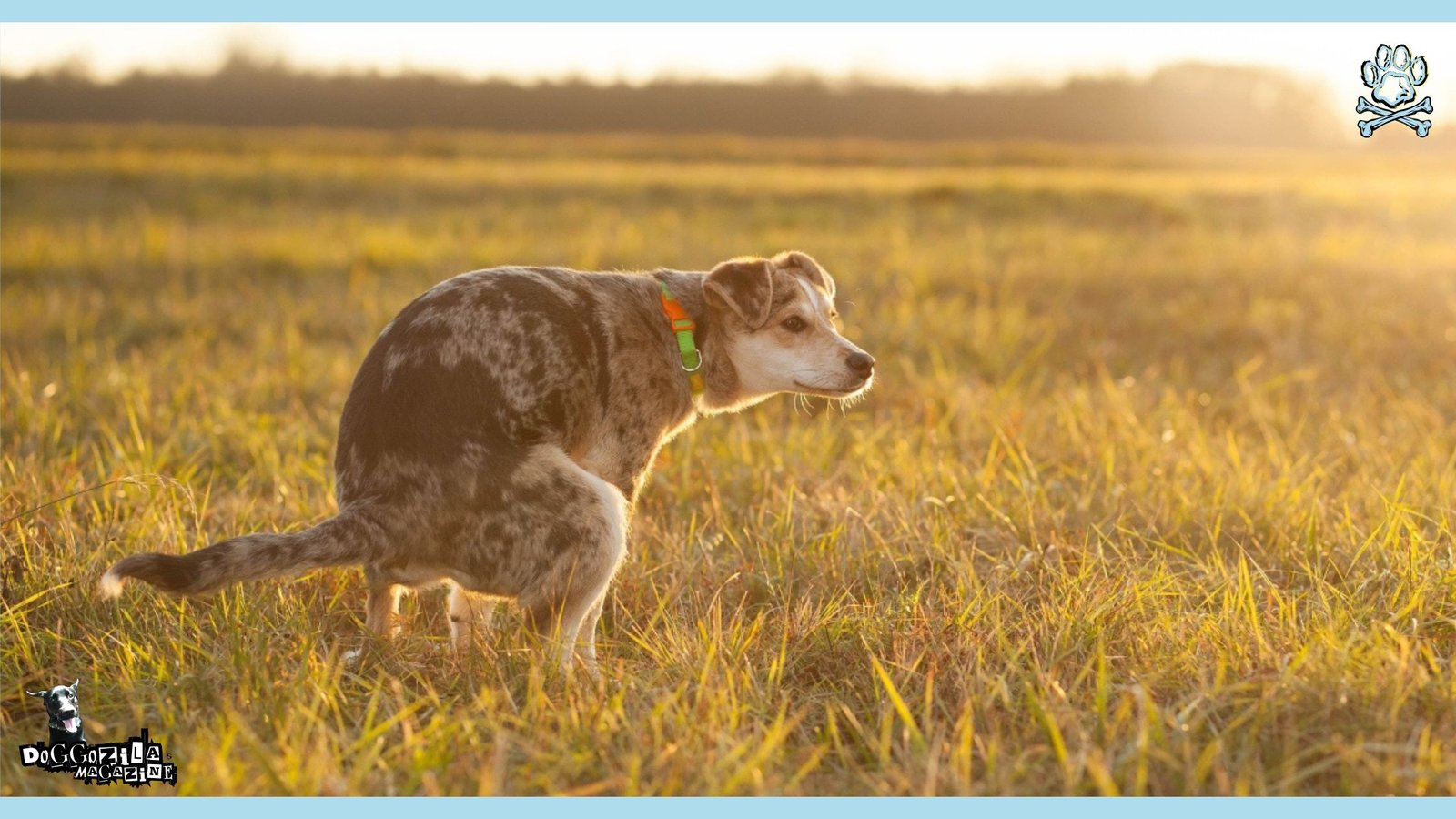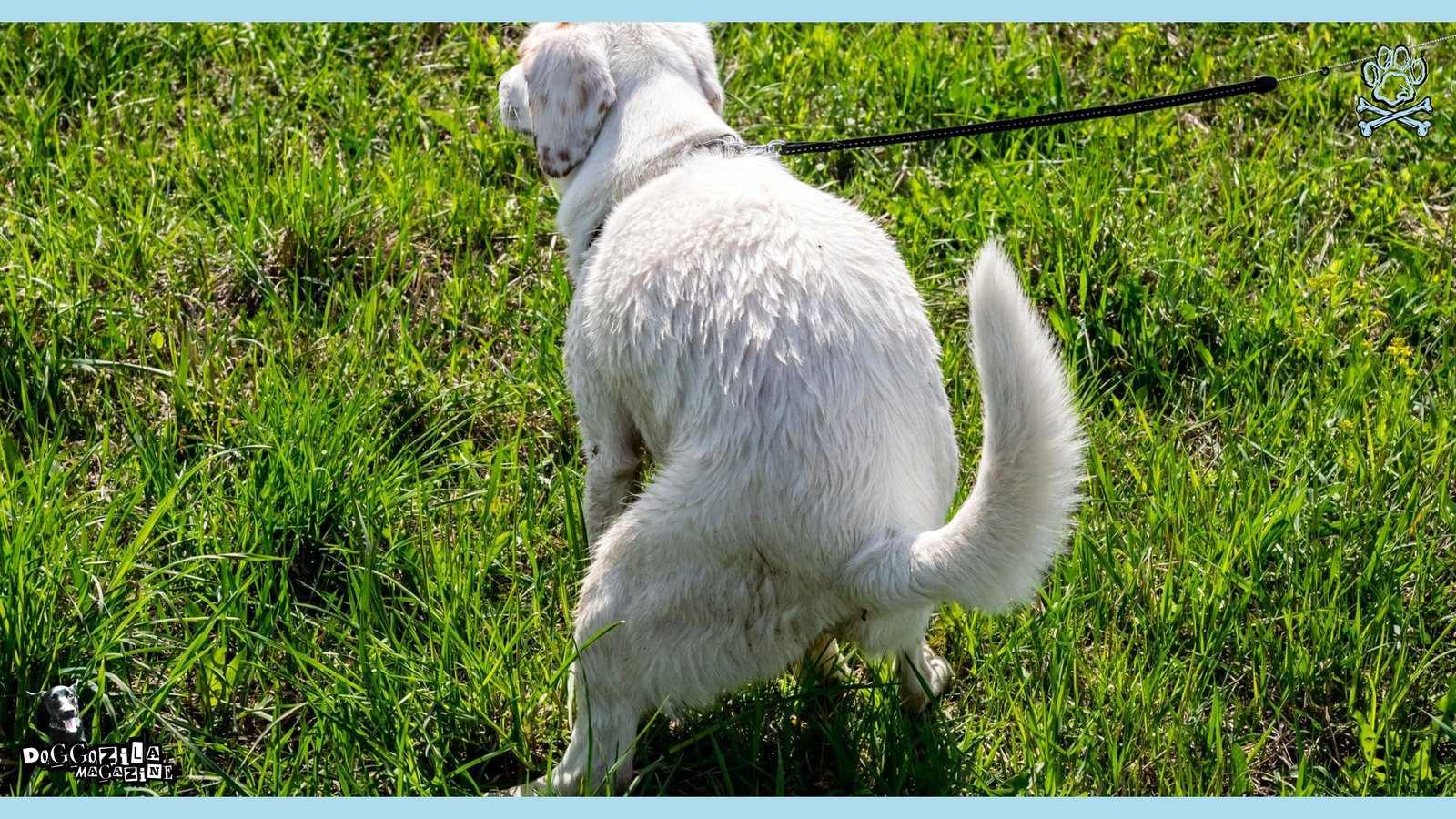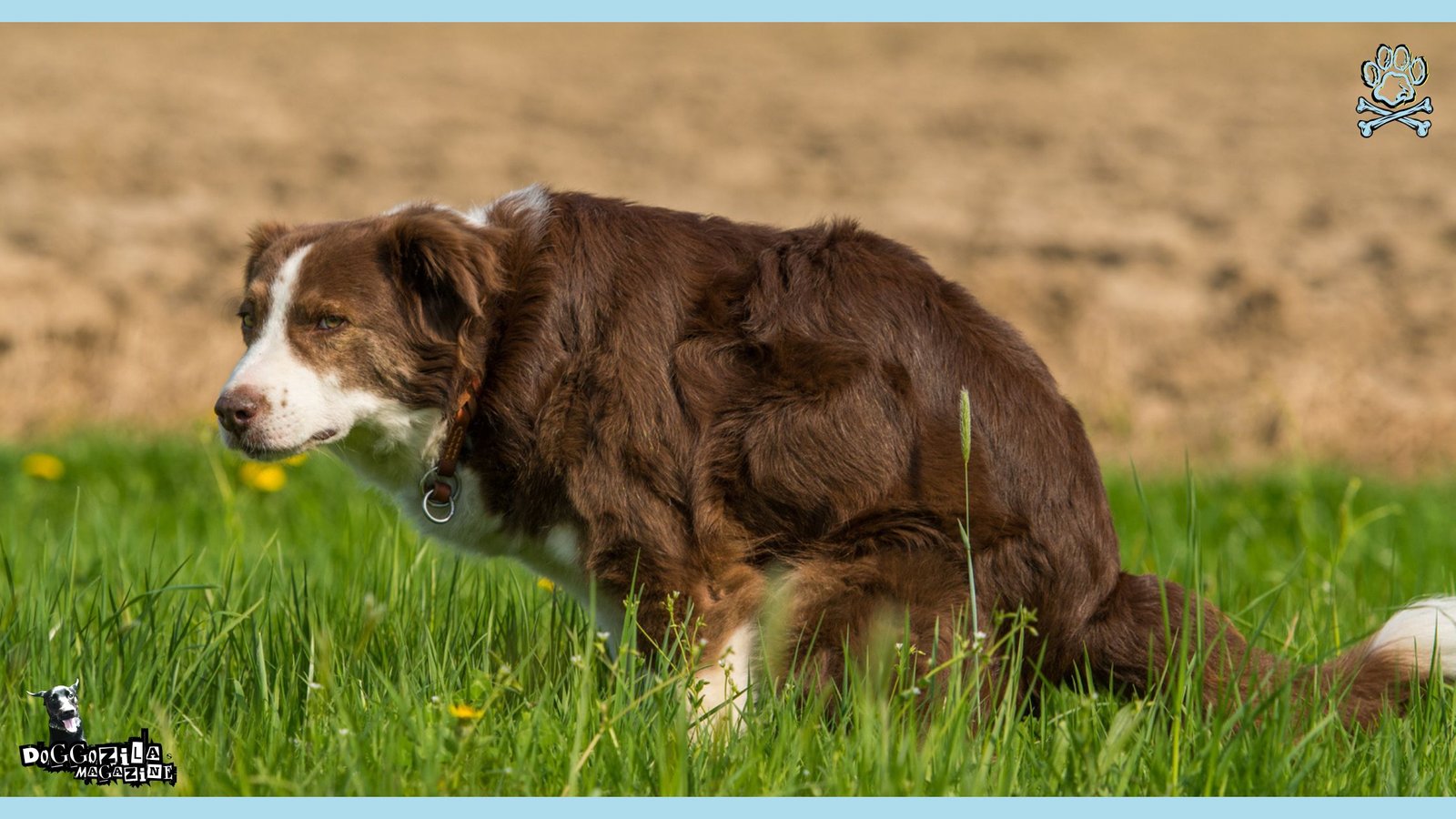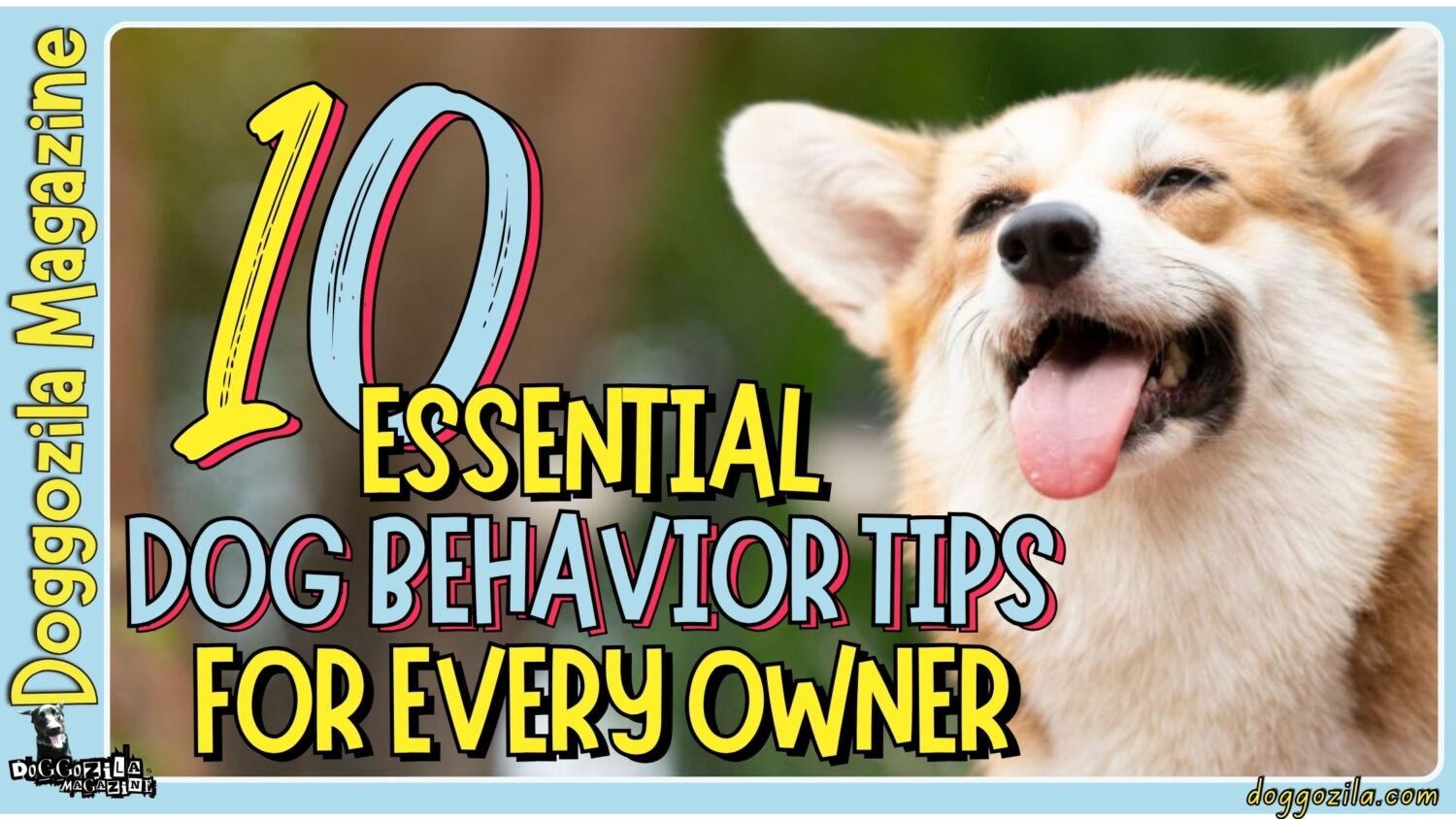
INTRODUCTION TO THE POOPING DANCE
Understanding the behaviors exhibited by dogs before they defecate is key to deepening our knowledge of canine behavior. One particularly notable phenomenon is when dogs circle before they poop and people affectionately termed this as “the pooping dance.” This term encompasses a series of behaviors that dogs display prior to relieving themselves.
These behaviors can include circling, sniffing, and even sudden sprints before finding the perfect spot. These actions may seem amusing or quirky to us, but they play an essential role in how dogs interact with their environment and communicate their needs.
The Science Behind Your Dog’s Pooping Dance
The pooping dance involves both physical movements and scents. Dogs utilize their keen olfactory senses to explore a potential potty area. By sniffing around, they are not only assessing the local territory but also gathering vital information about other animals that may have visited the area. The circling motion observed in many dogs can signify their intention to create a comfortable and safe space for themselves before defecation.
Timing, indeed, plays a crucial role in this process, enabling dogs to identify the right moment to perform this natural act. Throughout this article, we will delve deeper into the specific behaviors that compose the pooping dance, exploring their meanings and importance in the context of dog communication.
In addition, we will examine how understanding this behavior can foster a better relationship between dogs and their owners. By recognizing the signs that your dog is preparing to relieve itself, you may find it easier to accommodate their needs and enhance your canine companionship. Structured observations and thoughtful insights will contribute to a comprehensive overview of this fascinating aspect of dog behavior.
The Origin of Dog Behaviors
The behavior displayed by dogs prior to pooping, commonly referred to as the pooping dance, can be traced back through their evolutionary lineage. Dogs, derived from wolves, have inherited a myriad of instincts that manifest in various behaviors, one of which includes dogs to circle before they poop. This behavior is deeply rooted in survival and territorial marking, essential traits that facilitated the existence of their ancestors.
The domestic dog (Canis lupus familiaris) shares a formidable connection with its ancestral lineage, tracing back to the gray wolf (Canis lupus). This evolutionary journey, which began approximately 15,000 to 40,000 years ago, has established a plethora of behavioral traits that are fundamental to understanding modern canine behavior. Wolves, as social predators, exhibited distinct pack behaviors which have subtly influenced their domesticated counterparts.
Understanding these behaviors requires a comprehensive examination of both their wild instincts and how these have been adapted or modified through domestication. During the time when dogs roamed in packs, they were vulnerable to predators while in the act of pooping. This vulnerability likely led to an instinctive action where circling offered them a brief yet critical advantage.
By walking in circles, dogs not only sensed their surroundings but also visually assessed for potential threats in proximity. Circling would allow for the assessment of nearby dangers, providing a brief moment to prepare or flee if needed. Furthermore, by standing in a specific area, a dog enhanced its ability to detect changes in the environment through smells and sounds.
The Instinctual Roots Of Dog Behavior
One of the key aspects of wolf behavior is their strong social structure, which promotes hierarchy and cooperation within packs. This intrinsic sociality has transitioned into what is seen among domesticated dogs today. For instance, the bonding behavior between dogs and their human caregivers often mirrors that of wolves, emphasizing the significance of social attachment and communication within their respective groups.
This lineage has led to behaviors such as loyalty, territoriality, and even certain vocalizations that reflect their wild ancestors’ instincts. Moreover, the predatory instincts that were once crucial for survival in wolves remain prevalent in dogs, although they may manifest differently.
While domesticated dogs no longer need to hunt for sustenance, behaviors such as stalking, pouncing, and infamously the pooping dance before defecation are remnants of their wild behaviors. This particular ritual is often linked back to their ancestor’s instinctual need to ensure safety and marking territory. Modern-day dogs may still practice these behaviors as a part of their natural instincts, showcasing the profound impact of their evolutionary history on contemporary dog behavior.
The Pooping Dance as Quirky Dog Behavior
The sight of a dog circling before it settles down to defecate is a familiar one for many pet owners. This quirky behavior can often elicit a chuckle or a sense of endearment. However, it is essential to recognize that this circling habit is more than a mere characteristic; it stems from deeply rooted instincts that date back to the evolutionary history of dogs. Understanding this dog behavior offers intriguing insights into how modern dogs still exhibit traits reminiscent of their wild ancestors.
When observing a dog preparing to relieve itself, one might notice various patterns of circling. Dogs may spin in circles or pace back and forth, seemingly engaged in a ritualistic dance. Such behaviors are not uncommon; in fact, many pet owners observe these patterns regularly. This phenomenon draws attention to the dog’s natural desires, as well as its instinct to create a sense of safety and comfort while choosing a suitable spot to go. Dogs remain highly attuned to their environment, and these actions may play a pivotal role in their overall well-being.
This instinctual behavior can be linked to the need for security. In the wild, a dog would circle to flatten grass or debris, creating a designated area for defecation that also serves to ward off predators. This tendency to establish a ‘safe zone’ remains prevalent in our domesticated dogs, even if the risks are minimal in a home environment. While it may appear to be an idiosyncratic dance, many signs point towards this practice being evolutionary beneficial for dogs, allowing them to make their mark while ensuring their safety simultaneously.
🔑 Key Points: The circling behavior in dogs before pooping is an instinctual echo of their wild wolf ancestors. That behavior is serving as a safety measure in a vulnerable position.

SURVIVAL INSTINCTS AND THEIR IMPACT ON BEHAVIOR
Dogs, like many animals, are guided by instinctual behaviors that have evolved over thousands of years. One prominent behavior influenced by these survival instincts is the manner in which dogs prepare to defecate.
For many dogs, the act of defecation is not just a biological necessity but also a moment when they may be particularly vulnerable to potential threats. This vulnerability stems from the innate instinct to seek safety while performing this essential function.
Importance Of A Secure Environment For Dogs
As a result, dogs often show visible signs of caution, such as scanning their surroundings before finding a suitable spot. Additionally, scent marking plays an integral role in canine behavior, particularly concerning territory. When a dog defecates, it is not only a release of waste; it is also a strategic act of marking territory. The feces contains specific scents that communicate information to other dogs and animals in the vicinity.
These odor signals convey not just the presence of the dog, but also serve to define its territory and establish social hierarchies amongst canines. This behavior is deeply rooted in instinct and highlights the importance of scent as a form of communication in the animal kingdom. Moreover, the perception of risks while defecating can further influence a dog’s behavior. Domestic dogs may still exhibit predatory or cautious characteristics inherited from their ancestors.
They are prompting them to be on high alert during vulnerable moments. This instinct may also manifest in behaviors that include infamously the pooping dance, wherein a dog may circle or sniff the ground before settling down to relieve itself. Recognizing these survival instincts not only offers insights into general canine behavior but also underscores the importance of a secure environment for dogs as they engage in such vulnerable activities.
The Role of Territory Marking
Understanding the intricate world of dog behavior entails recognizing the significance of territory and scent marking in a dog’s life. Dogs, by nature, are territorial animals. They establish and defend a defined area, which they perceive as their own, using various signaling behaviors. One of the most notable aspects of this territoriality is scent marking, a phenomenon wherein dogs communicate their presence, reproductive status, and identity to other canines.
This behavior is essential, especially in environments populated by multiple dogs. When dogs engage in what is colloquially known as the pooping dance, it may initially appear as a quirky pre-defecation routine. However, this behavior serves a much graver purpose in the realm of dog communication. The movements, which often include circling and sniffing, act as preparatory steps before defecation and are integral to the process of scent marking.
In the wild, dogs use scent to gather information about their environment, including identifying the presence of other animals, marking boundaries of their territory, and even assessing potential mating opportunities. The act of circling creates a localized sensory array, allowing the dog to inspect the area for specific scents. By engaging in this behavior, dogs can find the optimal location that provides them both security and the opportunity to leave their own scent behind.
The Role of Scent Marking
Through this dance, dogs are not only preparing the spot for elimination but also assessing the scents left by other animals. They are gathering information vital for their social dynamics. Upon completing their act of defecation, dogs leave behind feces that contains not only their waste but also pheromones and other scent markers. These scent cues provide information to other dogs in the vicinity.
They are indicating the presence of the individual, their health status, and what can be learned from their territorial claim. This potent communication tool is critical in the wild. It informs other animals of boundaries and aids in the establishment of social hierarchies. Understanding that the ‘pooping dance’ is a combination of marking territory and gathering olfactory information sheds light on the complexities of dog behavior and highlights the significance of scent in their lives.
Moreover, this indigenous behavior has deep evolutionary roots. Historically, wild canines would circle and sniff around prior to eliminating as a precautionary measure to avoid potential threats. Even domesticated dogs, whose environments may be safer, maintain this instinctive behavior. That is why this is reinforcing the significance of scent marking in their daily activities.
🔑 Key Points: The act of circling before pooping allows dogs to leave behind pheromones from their paw glands. That behavior is serving as a form of territorial marking and communication with other dogs.

THE POOPING DANCE: A BREAKDOWN OF THE BEHAVIOR
The pooping dance is a colloquial term that refers to the series of behaviors exhibited by dogs prior to defecation. This behavior typically encompasses a combination of circling, sniffing, and adjusting their position before the act of pooping.
To understand these actions, it is essential to consider the innate instincts inherited from their wolf ancestors. These behaviors are deeply rooted in their evolutionary history.
Preparing The Spot: A Comforting Ritual
Circling is among the most recognized components of the pooping dance. Dogs often walk in a circular pattern before they settle down to defecate. This behavior can be traced back to wolves. They also circle to create a comfortable area by flattening grass and any potential obstacles. By circling, dogs can assess their surroundings and ensure a suitable spot for their needs.
While it may seem like a quirky habit, this ritual has deeper roots and significance. Circling serves multiple purposes in the dog’s instinctual behavior, helping to instill a sense of comfort and safety. Additionally, this action can be seen as a way for the dog to establish territory before leaving their scent. This is a natural instinct inherited from their ancestral lineage.
This behavior originates from their ancestors, who instinctively needed to clear a space of potential dangers before becoming vulnerable during the act of pooping. In the wild, while a dog was in the compromising position of defecation, they were defenseless against predators. By circling, dogs instinctively check for any potential threats, ensuring that they establish a comfortable space that minimizes risks.
Dog’s Instinctual Need To Communicate With Their Environment
Sniffing is another vital behavior that accompanies the pooping dance. Dogs possess an extraordinary sense of smell, which they utilize to gather information about their environment. By sniffing the area, they can detect the presence of other animals or any potential threats.
This exploration serves two main purposes: checking for the safety of the location and determining whether it is already marked by another dog.
Through this behavior, dogs exhibit their instinctual need to communicate with their environment, similar to their wild ancestors. By engaging in this circling behavior, dogs are also able to mark their territory before settling down. Through this, they not only assert their presence but also create a familiar environment that is perceived as safe.
The Pooping Dance Is A Ritual For Safety Assessment And Personal Preference
Finally, the position a dog assumes before defecation also shows how this dance serves a purpose. Different breeds may adopt varying stances, whether squatting or lifting a leg. This act ensures maximum comfort and allows the dog to produce a complete bowel movement.
By understanding these components of the pooping dance, we can appreciate the intricate link between our domestic dogs and their wild relatives. That is reminding us how instinct still plays a pivotal role in their behavior today.
Ultimately, the circling ritual embodies a combination of instinctual safety assessment and personal preference. This pre-pooping behavior is essential for dogs, allowing them to navigate their environment, alleviate anxiety, and ensure their comfort. That is making the experience of relieving themselves more secure and less vulnerable.
🔑 Key Points: Sniffing and circling behaviors in dogs are driven by their innate curiosity and desire. It’s in their nature to explore and gather information about their environment.

VARIATIONS IN THE POOPING DANCE ACROSS BREEDS
The pooping dance, an intriguing behavior exhibited by dogs prior to defecation, can vary significantly across different breeds. This variation is influenced by a multitude of factors, including breed characteristics, individual personality traits, and past experiences.
Vigorous Routine Or Subdued Pooping Dance
Certain breeds may display more pronounced and elaborate pooping dances due to their inherent instincts and energy levels. For example, herding breeds such as Border Collies and Australian Shepherds often showcase a vigorous routine. Their natural predatory instincts drive them to engage in various movements before finding the perfect spot to relieve themselves.
In contrast, smaller breeds like Chihuahuas or Pomeranians may exhibit a more subdued pooping dance. Their behavior may be affected by their size relative to their surroundings, leading to a less intense display. Moreover, individual personality can further shape these dances. Particularly playful dog may be more energetic in its routines than a dog that is more reserved.
Life Experience influences The Pooping Dance in Dogs
This individuality often extends beyond breed categorizations. That is suggesting that the pooping dance reflects the unique combination of a dog’s genetics and its developed personality. Additionally, experiences in a dog’s early life can influence their behavior before defecation. Dogs that have faced stressful situations, such as harsh training methods or unstable environments, may show hesitance or anxiety, resulting in a notably different pooping dance.
Conversely, well-socialized dogs who are confident in their surroundings are likely to show more relaxed and spirited behaviors. Understanding these variations not only enhances our appreciation of canine behavior but also provides insights into their instincts. They are enabling better interactions between humans and their furry companions.
🔑 Key Points: Dogs choose specific spots for pooping based on factors like comfort, texture, scent, and privacy. Especially highlighting the importance of understanding their individual preferences.

THE HEALTH PERSPECTIVE OF THE POOPING DANCE
The circling behavior exhibited by dogs before they relieve themselves is often a fascinating topic of discussion for pet owners. This routine can be attributed to instinctual behavior. It can also serve as an indicator of a dog’s overall health. Typically, a dog will circle a spot before squatting to create a comfortable environment. Variations in this behavior may signify underlying health issues.
Related Article Recommendation: How Long Can Dogs Go Without Pooping?
The Pooping Dance Signs Of Healthy Habits or Discomfort and Distress
In general, a dog that circles a few times before pooping demonstrates typical behavior and suggests that its digestive system is functioning correctly. This routine allows dogs to align their bodies with the earth’s magnetic field, providing them with both comfort and security. Healthy dogs will exhibit rhythmic and consistent circling patterns. However, if a dog engages in excessive circling, extends the duration before elimination, or demonstrates difficulty in find a suitable spot, these may be red flags that warrant attention.
Excessive circling can potentially indicate discomfort or anxiety. If a dog appears restless, whines during the process, or shows signs of distress, it may be experiencing gastrointestinal issues or other health conditions. Additionally, if a dog suddenly changes its pooping habits—such as increased frequency or altered stool consistency—these signs should prompt a visit to the veterinarian.
Behavioral changes may also include straining, reluctance to eliminate in certain environments, or unusual posturing during the act. Monitoring these behaviors allows pet owners to gauge their dog’s health effectively. In addition, regular veterinary check-ups can ensure that any emerging concerns are addressed promptly. Ultimately, being attentive to a dog’s circling behavior and related habits can provide essential insights into their overall well-being.
🔑 Key Points: Excessive or disoriented circling before pooping could indicate an underlying health issue. That is why it is important to monitor your dog’s behavior and consult with a veterinarian if needed.

Understanding Our Dogs on a Deeper Level
As we have explored the various aspects of the pooping dance, it becomes clear that this behavior in dogs is not just a whimsical act but rather a manifestation of their instinctual tendencies shaped by evolutionary factors. The pooping dance, characterized by specific movements and rituals before defecation, serves multiple purposes that go beyond mere elimination.
Through careful observation, dog owners can witness a fascinating interplay of instinct, environmental awareness, and social communication at this pivotal moment in their pets’ routines. Understanding these behaviors encourages dog owners to forge deeper connections with their pets. The pooping dance can signal a dog’s comfort level, territorial claims, or even anxiety.
Recognizing this enables owners to respond in ways that foster a sense of security and well-being for their companions. Moreover, it highlights the importance of attentiveness to non-verbal cues that dogs provide. They always are encouraging a shared language between species that enhances mutual understanding.
Window Into The World Of Our Dogs
Incorporating this knowledge into daily interactions with our canine friends can lead to improved training methods and a more harmonious relationship. For instance, if a dog exhibits restlessness or peculiar behavior prior to defecation, owners can take proactive measures to ensure an appropriate and comfortable environment for their pets. This understanding goes a long way in alleviating potential stress, ultimately supporting a better quality of life for dogs.
By observing and interpreting these instinctual actions, deepens the bond that exists between human and canine. Through such awareness, the pooping dance transforms from a mere biological necessity into a window into the world of our dogs. They are revealing their emotions and instincts in a way that can significantly enhance our companionship.
Embracing the Furry Habits
Understanding the behaviors of our canine companions is essential for fostering a strong bond with them. The recurrent pooping dance that many dogs exhibit before relieving themselves—characterized by circling, sniffing, and positioning—is not simply a quirky ritual. It is deeply rooted in their evolutionary instincts and serves multiple purposes. This pre-elimination behavior can be traced back to their ancestral traits.
Than circling helped dogs identify the safest and cleanest spot for their needs. Consequently, these behaviors illustrate the connection between our pets and their natural instincts. Pet owners should take solace in knowing that such behaviors are part of the unique charm that accompanies dog ownership.
Recognizing and valuing this aspect of a dog’s character enhances our appreciation for their individuality. Furthermore, the pooping dance also acts as a means of communication! That is allowing dogs to convey their presence, while simultaneously marking their territory.
Understanding that dogs have their own ways and means of expressing themselves will help us respond more compassionately to their needs. This, in turn, fosters a trusting relationship that ultimately promotes their well-being. Thus, the next time you observe your dog performing their pre-pooping dance, cherish this moment as a reminder of the whimsical nature of the dog behavior and the enduring companionship that these habits symbolize.









